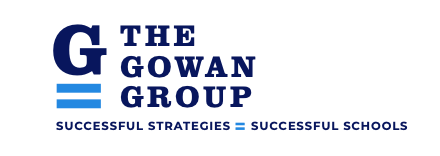On Friday, I interviewed a fellow St. George's School Alum, Adam Choice. Adam and I had the chance to reconnect via LinkedIn, and found we were both in the same field!
The Packer Collegiate Institute Admission Team
I went to Brooklyn, New York to learn more.
Adam Choice is the Associate Director of Middle and Upper School Admissions, partnered with Sheila Bogan, Director of Middle and Upper School Admissions at The Packer Collegiate Institute. To call Ms. Bogan and Mr. Choice a team is an understatement! Why? This "powerhouse" Admission Team fills & exceeds their enrollment goals each year!
What is The Packer Collegiate Institute's Secret to Full Enrollment?
We’ve been full every year. (Mr. Choice has worked for The Packer Collegiate Institute for two years, and Ms. Bogan for five years.) Once our deadline hits, we are full. We don’t do summer admissions. We shoot for 90 kids for 9th Grade every year.
Where do your Applicants live? What is appealing about Brooklyn Heights?
All over the city. The majority of 9th Grade for instance, 60-65% are from Manhattan. The rest of our student body is from Brooklyn. Some students commute from Long Island, Jersey City, and Hoboken. All five boroughs! Brooklyn Heights is easy to get to from all over the city, which gives The Packer Collegiate Institute a lot of geographic diversity.
Did The Packer Collegiate Institute struggle in Enrollment during 2008?
Though many schools got hit from the 2008 crisis, we were able to sustain our numbers. Every year our number of applicants increases. Sheila said there were roughly 200-250 applicants 5 years ago. This year, we had 400 applicants just for 9th grade.
WHAT MARKETING TRENDS ARE YOU SEEING AMONGST INDEPENDENT SCHOOLS RECENTLY?
Traditional Marketing
The Packer Collegiate Institute does not market as much as we did at St. George’s School. (Adam worked for St. George's School's Admissions Office from 2012-2014). I only do a handful of School Fairs for The Packer Collegiate Institute each year. For St. George's School, I went to School Fairs all over the country.
The Packer Collegiate Institute uses pamphlets and magazines to provide basic printed information. We are currently working with our Communications Office to make the printed material look less "old school," and enhance them.
Admissions Trend 2016: Digital Marketing
We are in the process of updating and sprucing up The Packer Collegiate Institute website. I believe a website is key. We need more visuals to brighten it up. That will have a huge effect. We don’t have a lot of things we’re mailing out. Our name is out there already, and we are lucky enough, by word of mouth, to get so many applicants already.
ALL SCHOOLS ARE HOPPING ON BOARD WITH DIGITAL MARKETING.
I go every fall to the SSATB Admissions Conference. I like to hear and see what other schools are doing. I attended meetings on marketing and strategy.
That is where I learned how important it is for Communications & Admissions Offices to collaborate.
I remember one particular school was putting out videos and posting daily on social media. Some schools only do a video for accepted students or big events. This school was putting something up everyday, and saw only positives in gaining applicants, popularity, and getting their name out there.
Social media is huge now for admissions & communications offices.
I think the relationship between Communications & Admissions is crucial for the whole, especially as we venture on to the 21st century.
Further Research
Before interviewing Mr. Choice, I spoke with Gowan Group's President & Founder, Chris Pryor, to discuss the firm's services regarding Enrollment Management, Admissions, and Communications. I pulled several articles to help me formulate my interview questions with Mr. Pryor.
I listened to this podcast from Blackbaud K-12, by Peter Baron. I learned how Admissions and Communications Offices were evolving, as Mr. Choice mentions above. Additionally, Admission Teams are now comprised of people who wear multiple "hats," with job requisites in digital marketing, data collection, and more.
In 2014, edSocialMedia and Caylor Solutions both make strong arguments in favor of effectively allocating School Admissions Budgets to inbound marketing. By utilizing social media and inbound marketing strategies, schools will see an increase in enrollment, and a decrease in costs.
Conclusion
Schools are moving away from traditional marketing, and lowering their budget. Admission Teams use few informational printed materials, proving significant changes in reaching new families and students. Without a strong social media presence, schools will fall behind, appearing dated, and leaving a poor first impression. Prospective families, who gather most of their preliminary research online, must see an updated website. Lacking digital identity will negatively impact branding and enrollment this year, and for years to come.
- Include digital marketing in your budget this year.
- Host a Professional Development to better verse your Director of Communications across all social media channels.
- Foster collaboration between the Communications and Admissions Departments.
Gowan Group would like to thank Mr. Choice, Ms. Bogan, and The Packer Collegiate Institute for allowing the firm to share this interview with our readers.
To learn more about The Packer Collegiate Institute and Mr. Adam Choice, visit their website here.
This interview and research is by Hailey Feldman, Director of Digital Marketing, Gowan Group.



